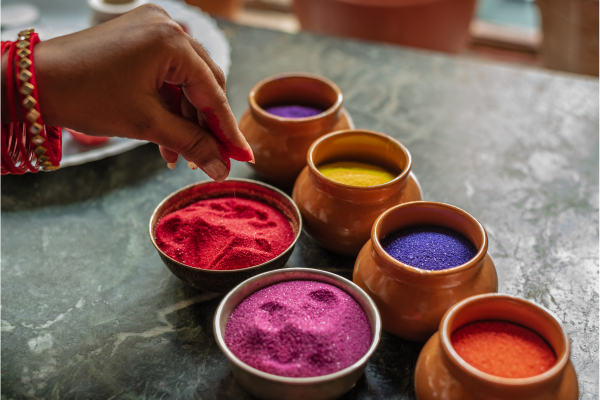Unveiling the Vibrant Navratri Colours: A Fusion of Tradition and Spirituality
Navratri Colours 2023: A Guide to the Spectrum of Festive Attire
Navratri, a nine-night festival dedicated to the worship of Goddess Durga, is not just about spiritual significance and cultural celebrations but also about embracing a kaleidoscope of vibrant colours. Each day of Navratri is associated with a specific colour that holds deep symbolism and cultural importance. In this article, we delve into the meaning behind Navratri colours, their significance, and how they are celebrated.
Table of Contents
- Understanding the Tradition of Navratri Colours
- The Significance of Navratri Colours
- Navratri Colours for 2023
- The Symbolism of Each Colour
- Celebrating Navratri Colours
- FAQs About Navratri Colours
1. Understanding the Tradition of Navratri Colours
The tradition of wearing specific colours during Navratri is an integral part of the festival. Each day of Navratri is dedicated to a different form of Goddess Durga, and devotees adorn themselves in colours that are associated with these goddesses.
2. The Significance of Navratri Colours
Navratri colours are not merely a display of beauty but carry deep spiritual symbolism. They are believed to represent the various qualities and attributes of the goddess being worshipped on that particular day.
3. Navratri Colours for 2023
The Navratri colours for 2023 are as follows:
- Day 1 (October 14): Yellow: The first day is dedicated to Goddess Shailputri, and yellow signifies joy and happiness.
- Day 2 (October 15): Green: On the second day, Goddess Brahmacharini is worshipped, and green represents growth and fertility.
- Day 3 (October 16): Grey: The third day is dedicated to Goddess Chandraghanta, and grey symbolizes balance and calmness.
- Day 4 (October 17): Orange: Goddess Kushmanda is worshipped on the fourth day, and orange signifies energy and positivity.
- Day 5 (October 18): White: The fifth day is dedicated to Goddess Skandamata, and white represents purity and devotion.
- Day 6 (October 19): Red: Goddess Katyayani is worshipped on the sixth day, and red symbolizes power and determination.
- Day 7 (October 20): Royal Blue: The seventh day is dedicated to Goddess Kalaratri, and royal blue represents strength and stability.
- Day 8 (October 21): Pink: Goddess Mahagauri is worshipped on the eighth day, and pink signifies compassion and love.
- Day 9 (October 22): Purple: The ninth day is dedicated to Goddess Siddhidatri, and purple symbolizes spirituality and enlightenment.
4. The Symbolism of Each Colour
- Yellow: Joy, Happiness, and Positivity
- Green: Growth, Fertility, and Harmony
- Grey: Balance, Calmness, and Neutrality
- Orange: Energy, Enthusiasm, and Optimism
- White: Purity, Devotion, and Peace
- Red: Power, Determination, and Passion
- Royal Blue: Strength, Stability, and Tranquility
- Pink: Compassion, Love, and Affection
- Purple: Spirituality, Wisdom, and Enlightenment
5. Celebrating Navratri Colours
During Navratri, people dress up in the specific colour of the day and adorn themselves with matching accessories. Traditional outfits, jewelry, and even makeup reflect the day’s colour theme. It is a way of paying homage to the goddess and immersing oneself in the festive spirit.
6. FAQs About Navratri Colours
- Why are specific colours associated with Navratri days?
- Each colour represents the qualities and attributes of the goddess being worshipped on that day.
- What is the significance of wearing Navratri colours?
- Wearing Navratri colours is a way of connecting with the divine energy of the goddess and immersing oneself in the festive celebrations.
- What if I don’t have the specific colour for a particular day?
- While it is a tradition to wear the designated colour, the most important aspect is the devotion and intent behind the gesture.
- Can I wear Navratri colours even if I’m not celebrating the festival?
- Yes, wearing Navratri colours is a beautiful way to embrace the festive spirit and symbolism even if you are not directly participating in the celebrations.
- Are there any specific guidelines for choosing Navratri outfits?
- There are no strict rules, but traditional outfits in the designated colours are commonly worn during Navratri.
Unveil the spirit of Navratri through its vibrant colours, and experience the joy and spiritual connection that these hues bring to the festive celebrations.

